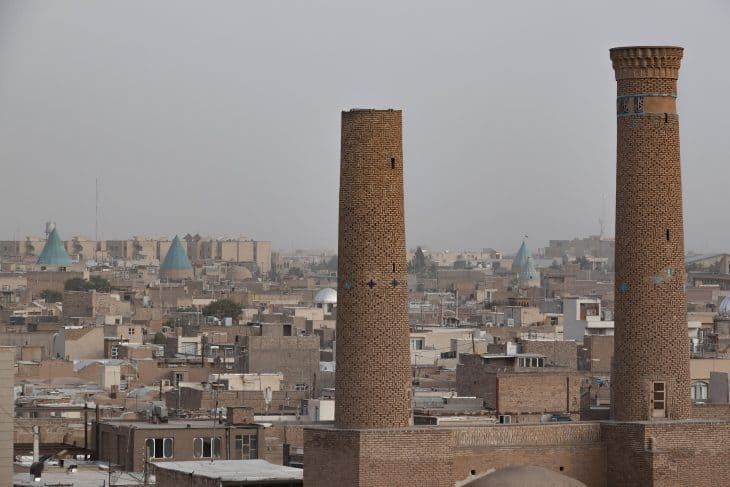
Iran, a country with a rich history and vibrant culture, offers a fascinating blend of ancient traditions and modern developments. From its pivotal role in shaping the ancient Persian Empire to its influence in contemporary geopolitics, Iran has a unique place in the world. Home to stunning landscapes, architectural marvels, and a deep literary heritage, Iran is a land of contrasts and beauty. In this article, we’ll explore 80 intriguing facts about Iran, covering everything from its diverse population and customs to its notable contributions in art, science, and technology.
- Iran, traditionally ‘Persia,’ is a country in Southwest Asia.
- The Middle East has Iran as its second-largest country.
-
Iran was founded on April 1, 1979.
- Tehrān (warm slope) is the capital of Iran located south of the Elburz Mountains.
- As of March 2020, Iran has a population of 83,678,670.
- In the Persian language, the Iran means “Land of the Aryans.
- Iran’s currency is the Iranian Rial.
- North of Iran lies the Caspian Sea and countries Armenia, Azerbaijan, and Turkmenistan.
- Afghanistan and Pakistan lie east of Iran.
- The Persian Gulf and the Gulf of Oman lies south of Iran.
- Iraq and Turkey lie west of Iran.
- Carpets are second only to oil in the largest export of Iran.
- Iranian females over the age of nine are required to wear a hijab in public.
- Religious rules prohibit women from wearing bathing suits in the presence of men.
- Iran counts among the largest producers of pistachios, caviar, and saffron.
- Unmarried Iranian men labeled na-mard or ‘not-men’ stay with their natal family their whole life.
- The primary routes for Southwest Asian-Europe heroin trans-shipment include Iran.
- Polo games in Iran started in the 6th century BC mainly as cavalry training.
- Iran allots around 4.5% of its GDP for its defense.
- The Iranian dish khoresht resembles curry with its meat and vegetables cooked in thick sauce.
Iran Facts Infographics

Iranian weavers make a mistake on Persian rugs by design.
This is to symbolize their belief that ‘only God is perfect.’ These world-renowned rugs have been part of the Persian culture for more than 2,500 years.
Iran's official name is the Islamic Republic of Iran.
This official name only started after the overthrow of the monarchy in 1979. From there, religious clerics led by supreme leader Ayatollah Khomeini assumed political power and renamed the country as an Islamic Republic.
Iran ranks 18th in the largest countries in the world.
Covering a total land area of 1,648,195 sq km, Iran is slightly smaller than Alaska.
The Elburz Mountains or 'Alborz' cuts across Iran.
From the south shore of the Caspian Sea, Elburz sprawls up to the east in the border ranges of the Khorāsān region in Iran.
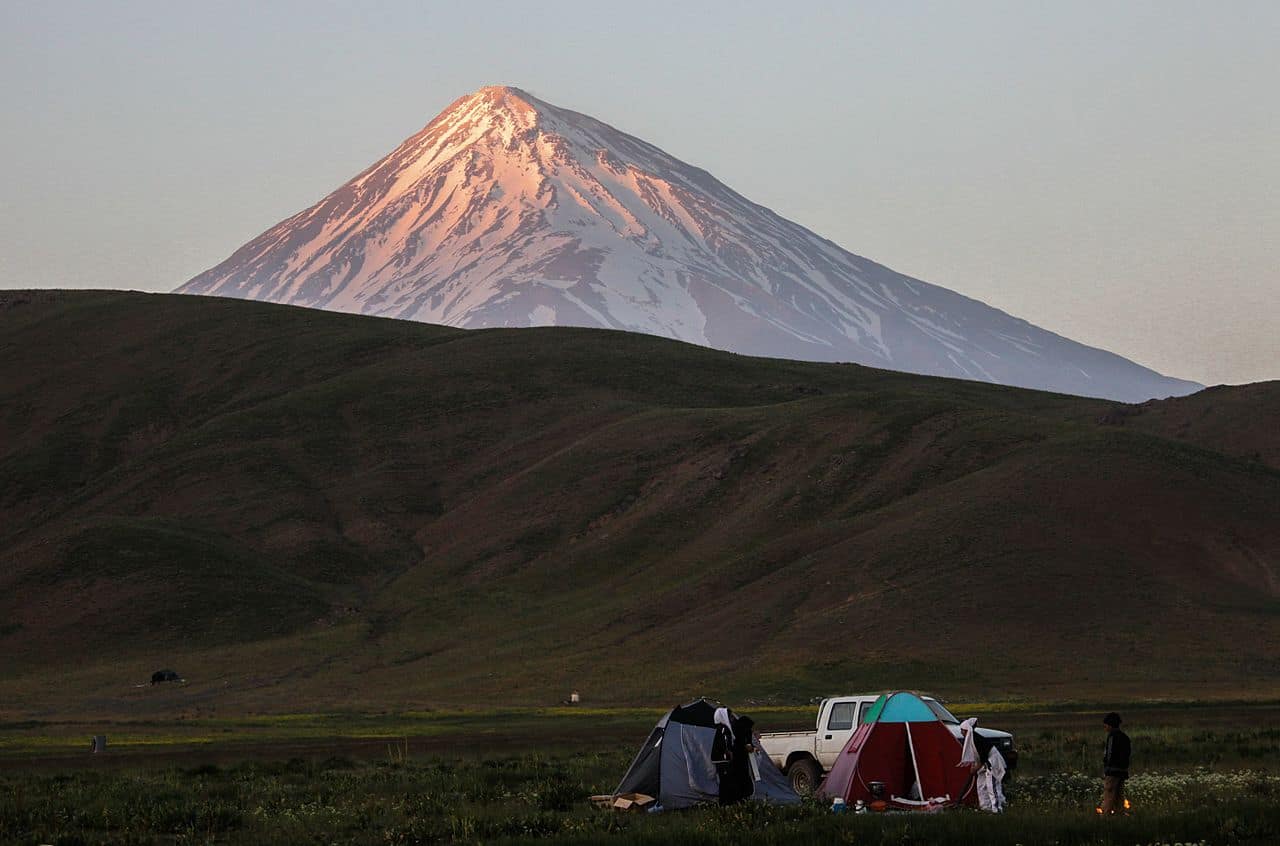
Due to the country's huge size, the climate in Iran varies on geography.
By the Caspian Sea coast, the weather is typically cool with rain. Meanwhile, the southern region of the country is relatively hot and dry.
Most parts of Iran have an arid desert climate.
Summers in the country are brutally hot while the winter is on equal extremes in freezing cold. The northern cities also have common snow during low-temperature dips.
The highest point of Iran is the peak of Mount Damāvand.
At 18,605 ft, Mount Damāvand is automatically the highest peak of the Elburz Mountain range.
Iran is prone to frequent and violent earthquake activity.
Records from the 20th century reveal that there were at least a dozen 7.0 or higher magnitude earthquakes felt in the country, unfortunately taking many lives.
Iran only has 1 river that could be navigated by boat.
Iran has 8 main rivers, but only the Karun River is accessible to boats – and only for short distances at that.

Iran holds 10% of the oil reserves of the world.
All of Iran’s oil reserves almost equates to 125 billion barrels of oil. Meanwhile, 60% of the oil reserves of the world hail from the nearby Persian Gulf.
Iran utilizes a water supply system called qanat or kanat.
Since ancient times, the kanat system involves the collection of underground water. It would then move through tunnels to reach the people in need.
Iran counts among the oldest continuous civilizations in the world.
Iran has been home to settlements and civilizations dating as far back as 4000 BC.
By 6th century B.C., the Medes were the first people to unify Iran.
Of Aryan origin, the Medes include the Magi tribe comprised of powerful Zoroastrian priests.
The famous Three Wise Men were members of the Magi tribe.
The three Bible characters who brought gifts to the newborn Christ in the Nativity story originated from Iran. In the 13th century, Italian explorer Marco Polo even claimed to have visited the three wise men’s graves which now rests in modern-day Tehran.
Persians make up a majority of the Iranian population.
Comprising 61% of the population in Iran, Persians are the biggest demographic in the country. The Azeri follows at 16%, with Kurd at 10% and Lur at 6%. Baloch, Arab, Turkmen and Turkic each comprise 2%, while other minorities make up the remaining 1%.
Iranians below 30 years old make up the majority of the country’s population.
Upon the constitution of the Islamic Republic in 1979, religious leaders encouraged reproduction among younger married couples. They even cited a Quran tenet promoting support for young marriage and having numerous children.
The new regime in Iran offered incentives for having more kids.
Among offers made by the Iranian government is the distribution of televisions and vehicles, and food given per-head. With these incentives, they made big families look more appealing. However, the program ended in 1988 due to the leaders’ fear of the subsequent baby boom outgrowing the infrastructure of the country.
The cost of Iranian marriages was not a problem back then.
Today, marriage will definitely empty your pockets. However, it wasn’t always like that for Iran. The government even offered to pay for mass weddings as another attempt to encourage marriage and procreation among young Iranians.
Iran prohibits same-sex union but allows sex-change operations.
Since its rise to fame in the country in 2008, Iran ranked second only to Thailand in having the most sex-change operations in the world. The Iranian government supports it by providing financial assistance. However, the government still prohibits same-sex marriage.
Pierre Omidyar, the founder of eBay, is Iranian.
Other notable people from Iran are news anchor Christiane Amanpour, Olympic silver-medalist wrestler Matt Ghafari, Expedia Inc. president and CEO Dara Khosrowshahi, and former Google SVP Omid Kordestani. Other household names that were established by Iranians are Bratz dolls manufactured by Isaac Larian, and Hot Pockets manufactured by David Merage.
Many Biblical figures are said to be buried in Iran.
The list of Bible characters laid to rest in Iran includes Cyrus the Great, Daniel, Darius the Great, Esther, and St. Thaddaeus.
Iran holds the Guinness World Record for the largest hand-woven carpet.
The Iran Carpet Company manufactured the largest hand-woven carpet for the Abu Dhabi mosque in 2007. Its original size is 60,000.81 sq ft or 5,630 sq m.
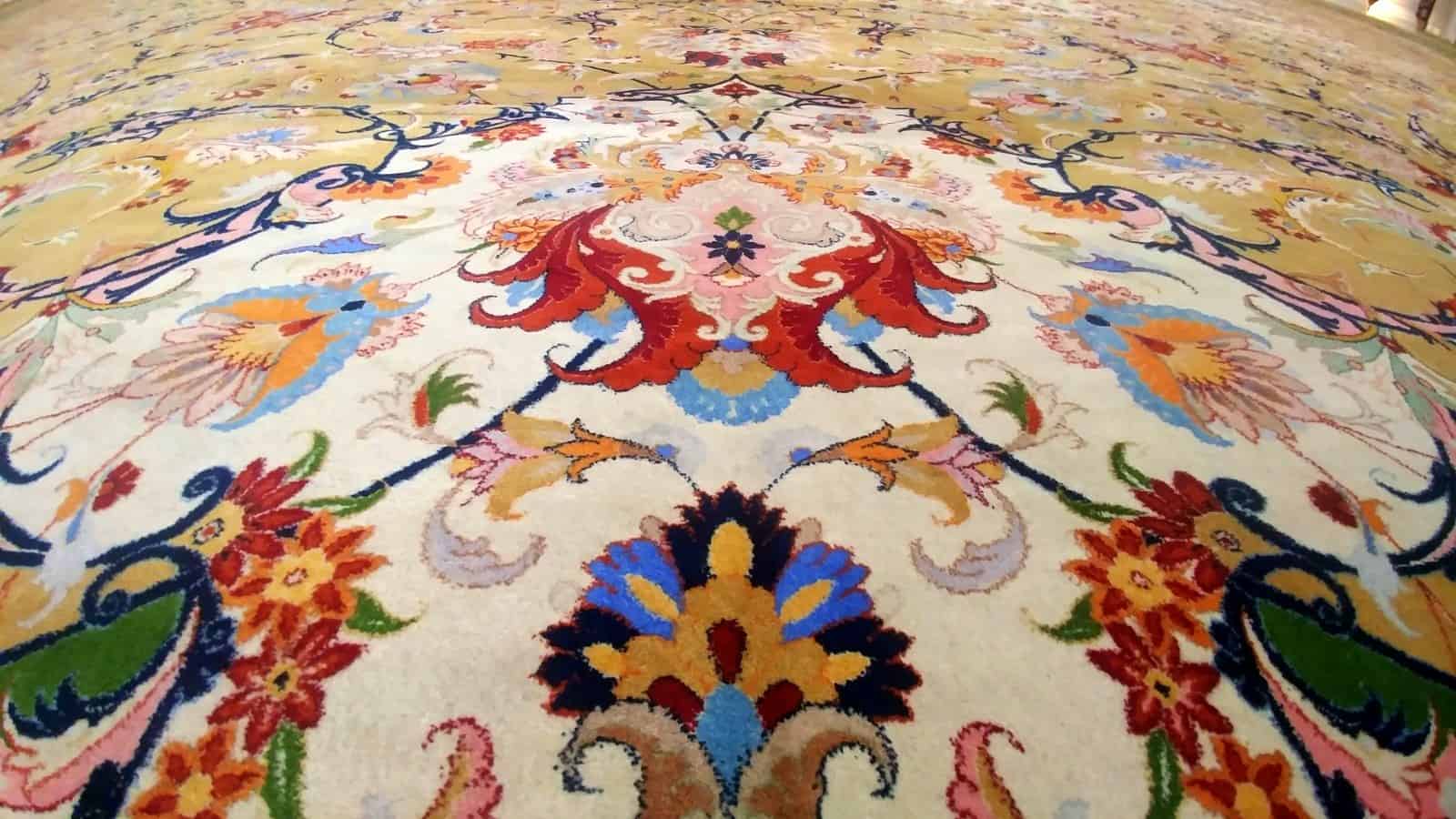
The record-holder carpet had was created in 9 parts to be assembled inside the mosque.
However, some parts had to be cut off from the original size so that it could fit onto the floor of the mosque.
Iran is home to the highest population of refugees in the world.
From the turmoil of Afghanistan and Iraq, about 1 million refugees fled to Iran. A lot of them are migrant workers and are willing to work in exchange for low wages in the urban expanses of Iran.
The Iran flag should be hoisted at the right of the viewer.
It features horizontal divisions of green, white, and red. In the center, it bears a red emblem with stylized writings lining the horizontal edges of the white part. The flags of Iraq and Saudi Arabia also features writings reading from right to left.

The Iran government is a unitary Islamic republic with a legislative house.
The 1979 constitution of the country established a mixed system government. A ‘rahbar’ or ‘leader’ serves as the head of both the state and overlooking institutions.
The rahbar in Iran is similar to a head of state.
It dominates over several bodies that oversee the executive, judiciary, and parliament of Iran.
The Iran military consists of 2 parallel organizations.
One is the regular armed forces while the other is the Islamic Revolutionary Guards Corps (IRGC). Over 500,000 personnel serve in the active service of Iran while over 300,000 are in reserve.
Iran takes credit for ballistic missiles ranging up to 2,000 km or 1,242 mi.
One example of these rockets is the Sejjil series. However, the country argues that these weapons are mainly defensive and not for the intent of carrying nuclear warheads.
The Iran navy boasts of the Ghadir-class mini-submarines.
They could launch cruise missiles. Moreover, the boats could carry 9 crew members but weigh no more than 150 metric tons.
The conflict between Iran and the US began in Operation Ajax.
Dispatched in 1953, this covert operation involved the CIA. Operation Ajax’s main objective is the overthrowing of Prime Minister Masaddegh, a democratically elected leader of the Iranian government. Shah pledged a 40% stake of Iran’s oil industry as a reward for the U.S. However, it sparked the nation’s mistrust against the U.S. which remains until today.
In Iran’s war against Iraq, the United States supported the opposition.
Aside from that, the U.S. also coerced other countries to halt weapon-selling to Iran. Later on, the U.S. was busted secretly selling weapons to Iran which was then called the Iran-gate, or the Iran-Contra scandal.
The U.S. Department of State declared Iran a human trafficking hub.
Their government still shows little to no efforts in deterring sexual trafficking and even holding girls accountable for ‘violating Iran’s standards of behavior.’ Other countries with such a set-up are the Democratic Republic of Congo, Saudia Arabia, and North Korea.
Agriculture, hydrocarbon, and service sectors characterize the Iran economy.
In 2017, the country’s estimated Gross Domestic Product (GDP) hit $447.7 billion in USD. Another contributing factor is the noticeable presence of the state in the financial and manufacturing services.
Iran ranks 2nd in the world’s natural gas reserves and 4th in proven crude oil reserves.
Both are essential in the government revenues and overall economic activity of the country.
Persian culture boasts of its lush gardens, luxurious rugs, and beautiful poetry.
The English term ‘paradise’ originated from a Persian word which means ‘enclosed garden.’
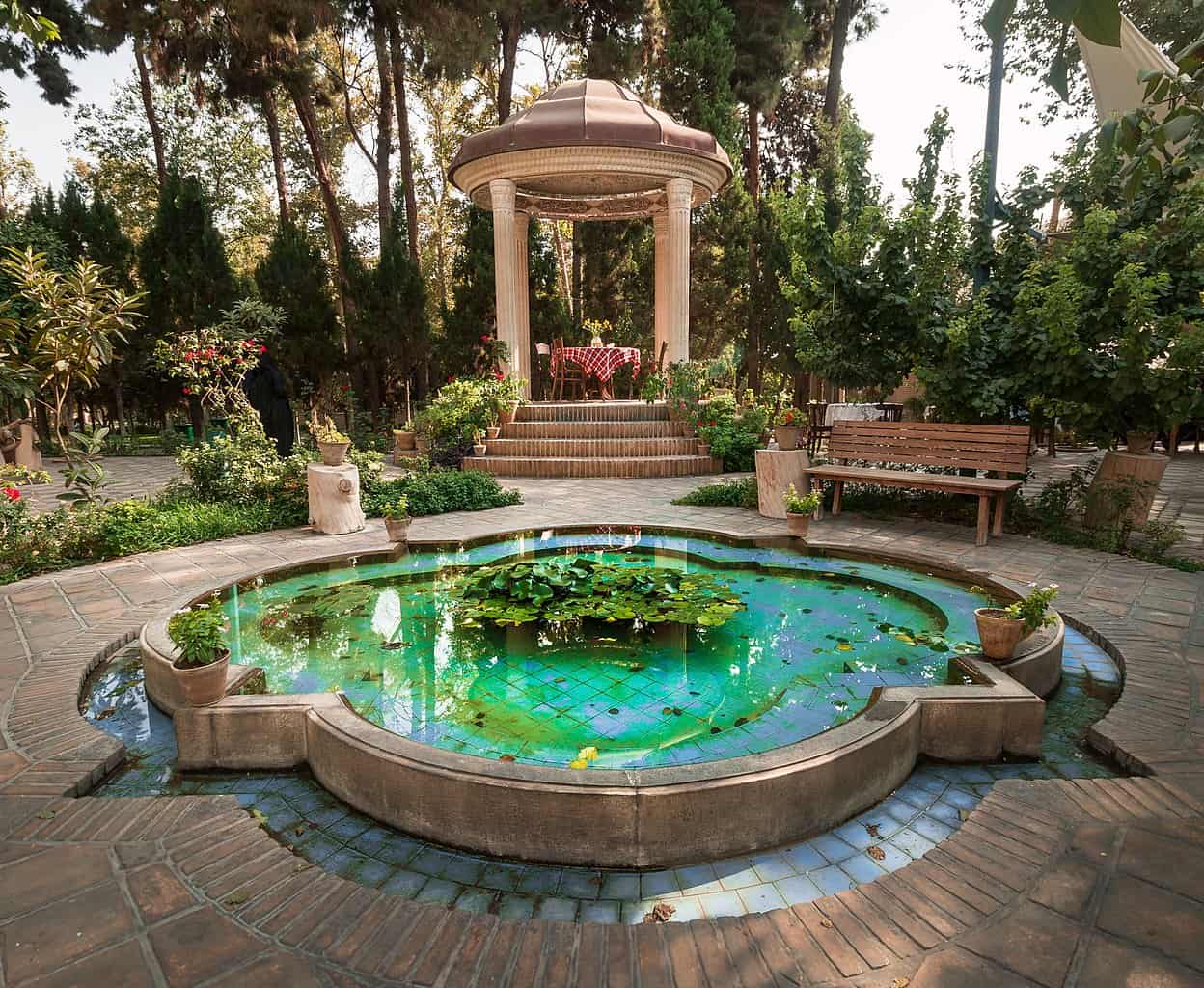
Poetry is a vital part of Persian culture.
Iranians could recite lines from notable Persian poems like the ‘Shahnameh’ or ‘The Epic of Kings.’
While the hijab is traditional clothing in Iran, it has a complicated history in the country.
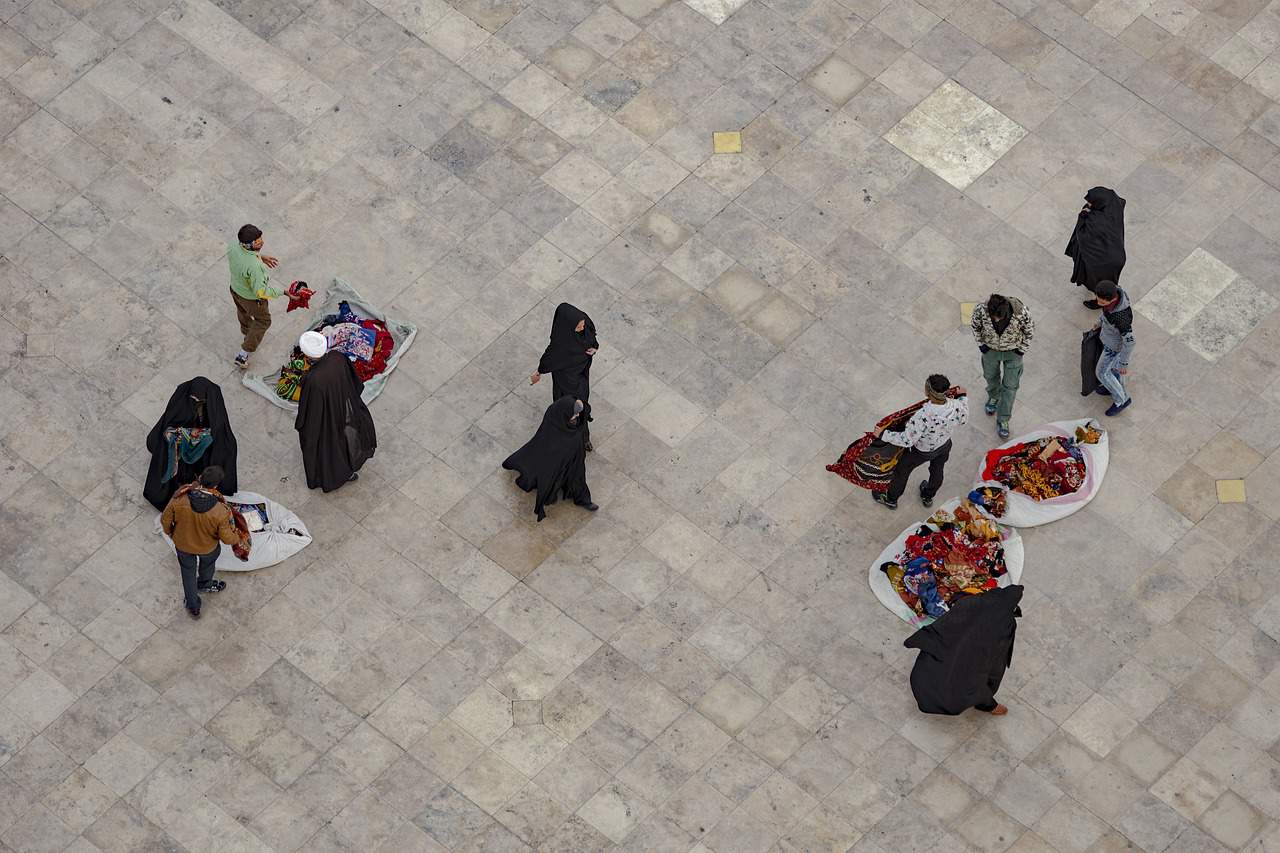
Reza Shah outlawed the hijab alongside other Islamic veils in 1936 in an attempt to westernize Iran. While the law was supposed to be a progressive step, its practice alienated and humiliated numerous Iranian women.
The revolution commenced a strict mandate on female’s clothing.
Iranians aged 9 years old and above should wear a hijab and cover their shoulders and legs in public. Violations are punishable by lashing, though it is not as strict now as it was before.
Islamic law practiced in Iran promotes gender inequality.
Under this law, women do not equal men whether mentally or legally. They also perceive children as ‘substance of the male merely incubated by the female body.’ Hence, a woman would lose all custody of children in case of a divorce.
Iran covers the only legal condom production factory in the entirety of the Middle East.
Iranian citizens have free access to birth control pills, condoms, and even permanent sterilization.
Iran has a set of social conventions and etiquette rules known as the ‘taarof.’
In gift-giving, it is customary for the giver to express apologies for the modest nature of the gift. On the other hand, the receiver must set it aside and unwrap it in private later.
Taking a contraception class session is a prerequisite for men and women prior to getting a marriage license.
This regulation aims to limit childbirth in the country. Aside from giving free access to contraception, the government provides restricted maternity leave benefits after the delivery of a third child.
Iran has been branded the ‘nose job capital of the world.’
Some of the known reasons are peer pressure and rebellion. It is also important to consider that Iranian women are only allowed to show limited body parts in public. Hence, enhancing an exposed profile like their nose is a significant method of self-expression for them.
Iran legalizes polygamy wherein men could marry up to 4 wives.
From 9 years old, the marriage age for girls rose to 13 since the Revolution. They could no longer go to high school after marriage. On the other hand, boys could only marry by age 15, which is also the legal age for voting in Iran.
Iran practices short-term marriages.
The Shari’a law in certain Shia schools allows sigheh or short-term marriages. Contract duration could vary from an hour to several years. Common usage for the set-up is for the satiation of male pilgrims visiting holy shrines away from families.
In Iran, the police could force a man to marry his rape victim regardless of her assent.
However, the rapist could divorce the victim right after the ceremony. This situation shows that a divorced woman in the country is considered more marriageable than an unwed girl whose hymen was ruptured.
Marital rape is not punishable by law in Iran.
Iranians typically believe that a woman is her husband’s property. Even if there are signs of abuse, the least that a victim could do is to have her family threaten her husband. Nonetheless, it does not count among the duty of the police.
Iranians refer to yogurt as ‘Persian Milk.’
In Iran, many people consider yogurt a miracle food as they could use it in treating ulcers, relieving sunburn, and even prolonging life. Another use of yogurt in the country is as a face mask.
Traditionally, Iranians prefer having bread with plain rice.
Bread variations include the lavash, sangak, and the taftoon, while plain rice a la iranienne is also known as chelo. They could be eaten with ‘kebab’ or pieces of meat/poultry or minced meat grilled on an open fire or with ‘khoreshtes.’
The world-famous ‘Persian Longhair’ or ‘Shiraz Cat’ is native to Iran.
This breed’s rise to fame started in 19th-century Europe and America after WWII. Endemic to Iran, Persian cats have distinct features of woolly fur and round, grouchy faces.

The Persian cat counts among the oldest breeds in the world.
Their origins could be traced back to Iran’s high plateaus where their long woolly, silky fur protects them from the cold. In the 17th century, Italian traders introduced the breed to Europe where they immediately became an exotic status symbol.
Soccer is the most popular sport in Iran.
Their national team conquered the Asian Cup 3 times and even played in 3 World Cup Final competitions.
In 1948, Iran started participating in the Olympics.
Since then, the country has sent athletes to play in every Summer Olympic Games except only for 1980 and 1984. Iran has participated in the Winter Olympics several times since 1956 as well.
Iran’s women’s soccer team was not able to play in a 2012 Olympics qualifier game.
In 2007, the International Federation of Association of Football (FIFA) banned the hijab, automatically banning the country’s team.
The Shah-En-Shah monument celebrates the 25,000th anniversary of the Persian Empire.
Constructed in 1971, the name has later been changed to ‘Azadi Monument’ which translates to ‘freedom’ in Farsi.
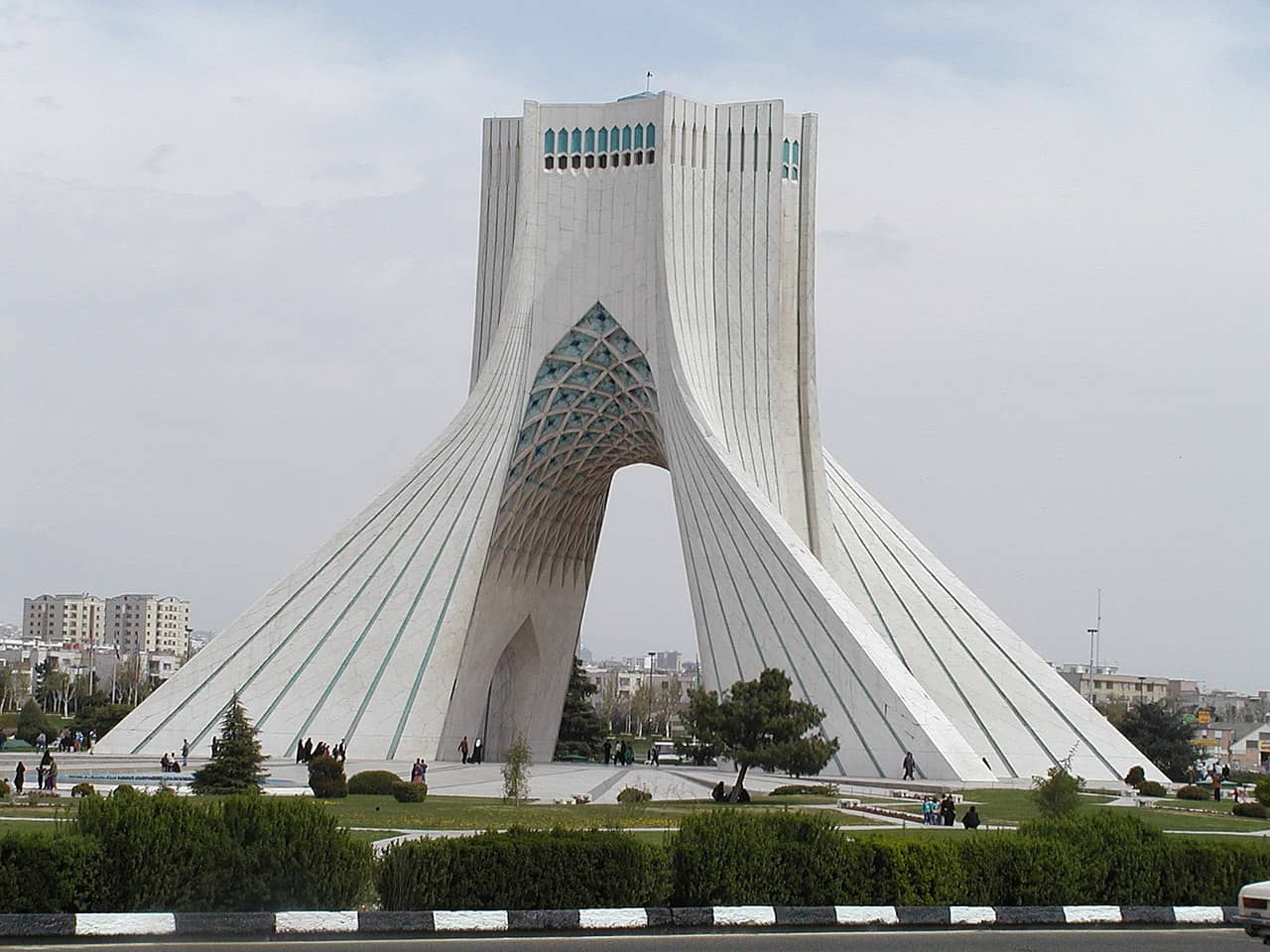
Islam is the dominant religion in Iran.
Islam covers 98% if the population, Shia at 89%, and Sunni at 9%. The remaining 2% consists of minorities such as the Baha’i faith, Christianity, Judaism, and Zoroastrianism.
In 2002, Iran admitted to working undercover on a nuclear energy program.
They have been involved for the previous 18 years with help from Russia. Still, President Ahmadinejad from that time claims that it has peaceful nuclear ambitions. He imposes Iran’s ‘inalienable right’ to produce nuclear fuel.
In 2012, the police chief of Iran painted Google as a spying tool.
Following that, the Iranian government expressed its objective to form a ‘national internet’ which would then be under state regulation.
An Iranian organization hung a price over the head of Salman Rushdie.
The author wrote the book The Satanic Verses wherein he hinted that some Koran verses might not be from God, but rather from a devil disguised in giving Mohammed false ideas. Because of this, an Iranian organization put a $3 million bounty on the author’s head.
Was this page helpful?
Our commitment to delivering trustworthy and engaging content is at the heart of what we do. Each fact on our site is contributed by real users like you, bringing a wealth of diverse insights and information. To ensure the highest standards of accuracy and reliability, our dedicated editors meticulously review each submission. This process guarantees that the facts we share are not only fascinating but also credible. Trust in our commitment to quality and authenticity as you explore and learn with us.
